Double Fine’s Keeper Wants You to Embrace the Weirdness of a Walking Lighthouse
Double Fine Productions, known for its eccentric and emotionally layered titles like Psychonauts and Broken Age, is back with a new project that fully commits to the studio’s offbeat storytelling philosophy. Keeper, a third-person puzzle adventure under the creative direction of Lee Petty, reimagines what an adventure game can be — by asking players to embody a walking lighthouse on a journey through a desolate, post-human world.
The game’s premise feels like something straight out of a surrealist painting: a lonely lighthouse befriends a bird named Twig and sets out across the land on a quiet mission toward a mysterious mountain peak. Instead of dialogue or combat, Keeper communicates through visual cues, light mechanics, environmental puzzles, and sound.
“Keeper communicates less than a typical game,” says Petty. “It was important for us to let the player relax a bit and not worry about messing up; just take a moment to try and embrace the weirdness.” — Lee Petty
According to Petty, Keeper is designed as a “palate cleanser,” a short and introspective experience aimed at players who want something calm, unconventional, and visually captivating. The world of Keeper is completely devoid of humans, existing long after civilization’s disappearance. The result is a peaceful yet melancholic atmosphere where remnants of human creations — machines, artifacts, and ruins — blend seamlessly into overgrown nature.
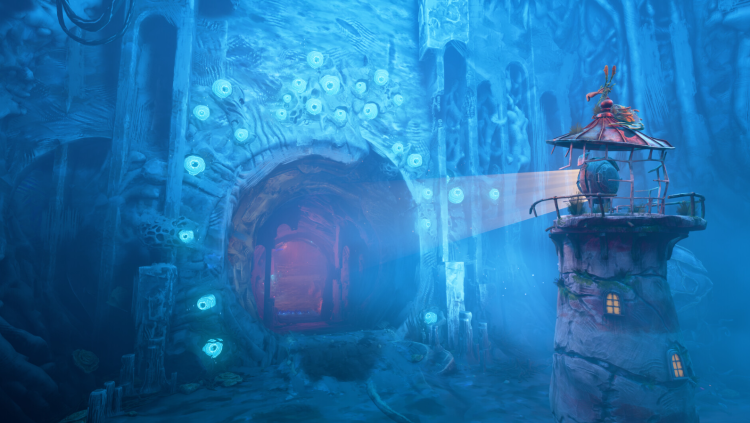
Unlike typical adventure games that rely on dialogue trees or failure states, Keeper removes most traditional systems. There are no health bars, skill trees, or crafting loops. Players can’t die, and there’s no grind for progression. Petty’s approach is to keep the focus on exploration and curiosity rather than mastery. “We captivate the player’s attention through the unexpected,” he explains. “You’re not really sure what’s going to happen around each corner.”
Puzzles are woven directly into the environment rather than presented as standalone obstacles. Players might stumble upon a riddle-like structure without understanding its purpose until experimenting with the lighthouse’s main tool — its light. The headlamp serves as the game’s primary interaction device, capable of making plants grow, scaring away small creatures, or revealing hidden details. This light-based mechanic replaces the traditional inventory or dialogue systems with something tactile and intuitive.
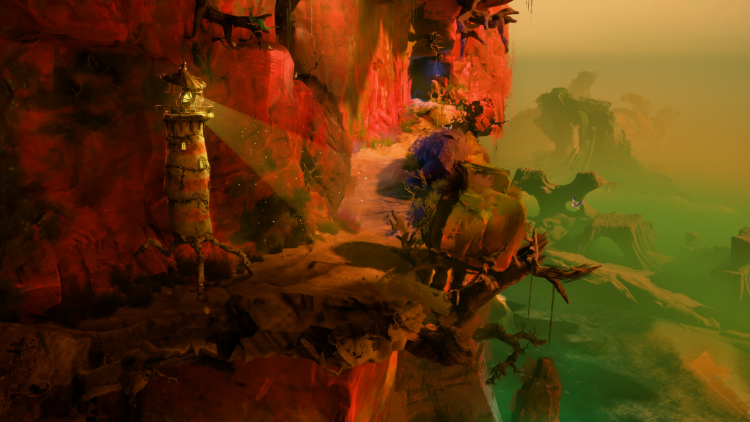
Twig, the bird companion, adds another layer of dynamic interaction. Usually perched atop the lighthouse, Twig occasionally flies ahead to reveal paths or trigger secrets. Players can also command the bird to lift objects, pull levers, or even attach itself to other creatures, opening up unexpected puzzle solutions. These small mechanics build a wordless language between the two characters, emphasizing their evolving bond throughout the journey.
Petty highlights that the development team avoided repetitive design. “We do that to some extent, as it's not like everything is done exactly once and thrown away,” he explains, “but there is a lot of unique setup. Every short distance away, you see something very different from the rest of the game.”
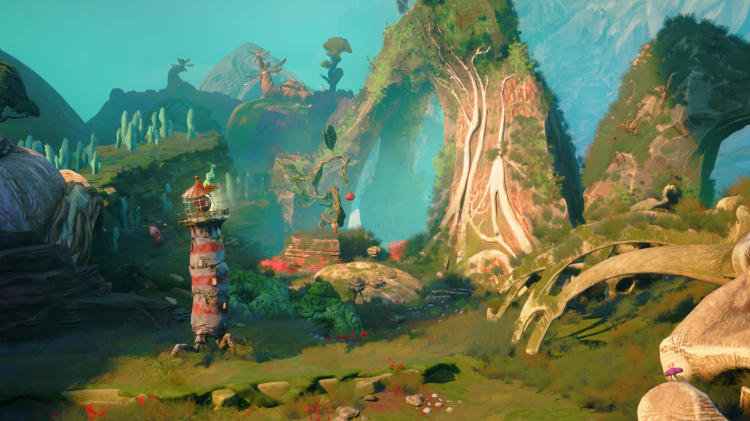
Keeper’s world constantly introduces new visual motifs and interactive concepts. One sequence, for example, involves a strange pink pollen that sticks to the lighthouse, reducing its weight and allowing it to jump and float. “For that segment of the game, the lighthouse can jump, float, and move around,” Petty says. “A breath of fresh air from being stuck to the ground.”
That ability to shift the rules keeps the game from becoming static, even though its pace is slow. Each area feels like a new dream logic vignette rather than another level in a traditional sense.
The relationship between the lighthouse and Twig forms the emotional backbone of Keeper. Despite the absence of dialogue, players can sense emotional shifts through small gestures and contextual animations. “When they're riding along on the lighthouse, you actually have a whole button dedicated to just emoting with the bird,” Petty says. “A lot of times it will reflect the emotional tenor of that area.”
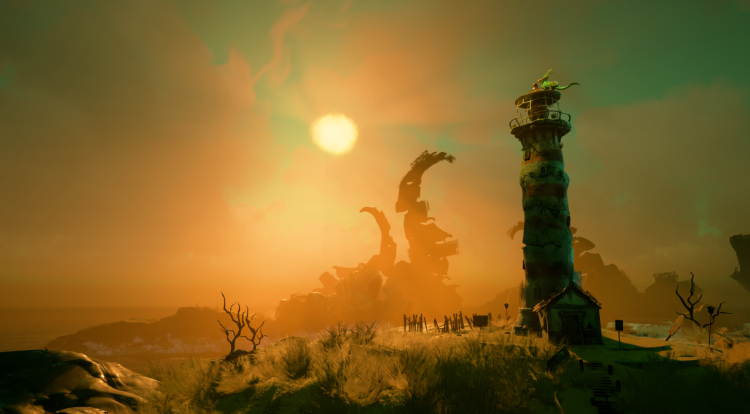
In darker, tenser areas, Twig reacts by curling up and lowering its head. If players press the emote button, instead of chirping playfully, Twig might glance nervously or duck down. These subtle cues replace the expressiveness normally handled through spoken dialogue or facial animation.
Danger in Keeper emerges not from enemies but from an encroaching force called the “Wither,” described as a living ecosystem of decay that manifests as purple brambles, vines, and insects. “It's what Twig is flying away from,” Petty says. While the Wither represents an ambient threat, most other creatures in the game are friendly or curious. Interacting with them may trigger ambient sounds or musical flourishes that contribute to the story’s tone.
This wordless storytelling invites players to interpret the meaning behind events rather than follow an explicit plot. Petty acknowledges that the ending won’t be entirely mysterious but intentionally leaves space for interpretation. “It's not a complete mystery, but because it's wordless, it's inherently open to interpretation,” he says. “We did intentionally want to leave some room for that because that's my favorite thing about art; the discussions that happen after people experience something. But we do provide specific narrative arcs and closure.”
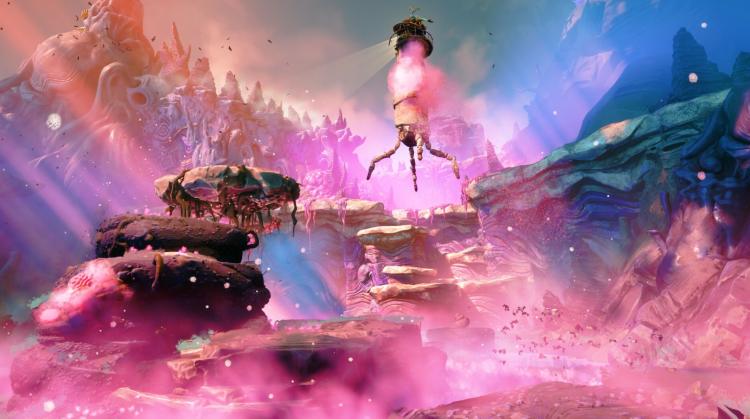
The game’s environments — from misty forests to mountain ridges and abandoned towns — draw directly from Petty’s personal life in California. “Near where I live, there's an old Mercury mine that was abandoned like a hundred years ago,” he recalls. “They've turned it into hiking trails; that's one of my big inspirations. It's nothing super remarkable, but what makes it interesting is the many hills, and as you're climbing up, you occasionally come across old pieces of machinery that you're not even sure what they were for.”
These remnants inspired the visual tone of Keeper: nature reclaiming what humanity left behind. Broken machinery, toppled architecture, and strange totems appear as silent monuments throughout the landscape, quietly reinforcing the theme of renewal.
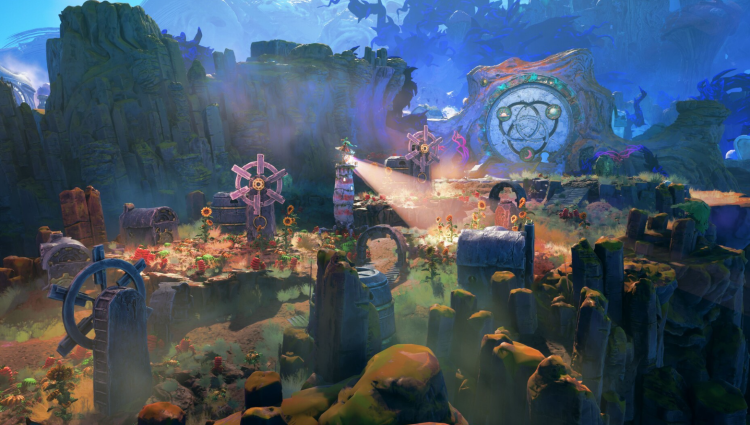
Even the lighthouse itself functions as a metaphor for change. “There’s an aspect to this game that's about change and overcoming your obstacles,” Petty says. “In the case of the lighthouse, in the context of our post-human game, it's this leftover artifact of the old world that no longer has a function; there are no ships coming in, so it's remained inert for a long time.”
He continues, “How has changed? Well, first it has to walk, and now its lights are used for something entirely different. A lot of that is about stimulating new growth, but there are lots of other things the light can do over the course of the game. I thought it'd be fascinating to use light in an ‘aiming’ sort of way, but it's not a weapon, you're not shooting anything.”
By reframing the purpose of light as an instrument of creation rather than destruction, Keeper stays consistent with Double Fine’s tradition of humanizing the surreal. It’s both literal and symbolic — a way of bringing illumination to forgotten spaces without relying on violence.
When asked which character he’d rather embody in real life — the towering lighthouse or its nimble bird companion — Petty doesn’t hesitate. “When I play Dungeons and Dragons or roleplay games, I always play rogues and thieves,” he admits. “So, as agility and hiding in shadows are my core, I would play the bird because the bird is much more agile and can escape danger more quickly than the lighthouse.”
Keeper is currently in development at Double Fine Productions under Xbox Game Studios, with no official release date yet.

Comments